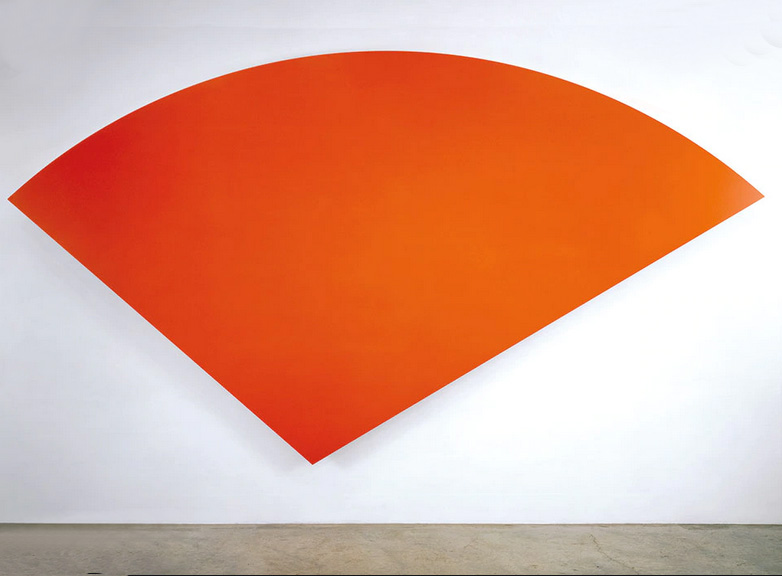Google says that the “integrity of the picture plane” is a phrase coined by the influential art critic Clement Greenberg in his essay “Modernist Painting”. It concerns the issue as to whether the fact of creating an “illusory pictorial space” interferes with perceptions of the “objectness” of the actual picture surface. This was a question of primary importance to the “Early Modernists” from the late 1860s onwards. For them, as explained in Chapter 6 of my book “Fresh Perspectives on Creativity”, the fact of the possibility of being aware of the actual surface of paintings was one of the reasons for what they believed to be their inherent superiority relative to photographs. Their belief was that, since “deception is immoral”, painters must avoid it at all costs. Despite the difficult-to-comprehend nature of this evidently questionable argument, it stuck for about a century. Thus, in the 1960s, it was still a potent aspect of the teaching of my two mentors, Professor Bohusz Szyszko and Michael Kidner. The difference between the “Early Modernists” and Clement Greenberg was that the former (and Professor Bohusz-Szyszko) thought it possible to depict illusory pictorial space without destroying the integrity of the picture surface. In contrast, Clement Greenberg asserted the impossibility of any such thing, as did Piet Mondrian and a number of earlier painters, plus a whole list of later artists, including Michael Kidner and Ellsworth Kelly.
As those who have read “Painting with Light”, the first Book in this Two Book Volume (see contents list), will realise, the early Modernists and Professor Bohusz-Szyszko got it wrong. The use of unmixed repeated colours did not disrupt the picture-surface, but rather the illusory pictorial space. They do so because our eye/brains read them as being on the picture surface and, consequently, as jumping out in front of any illusory pictorial space. It is thus, the integrity of illusory pictorial space that is disrupted.
![]()
Two paintings that illustrate different meanings of the phrase “integrity of the picture suface”
![]()

![]()

Go to top
Go to list of all other contents
Thank you for this Francis. It has clearly been a hot topic for a long time for many people. Could you please elaborate a bit more on why the early Modernists and Professor Bohusz-Szyszko ‘got it wrong’. They were wrong in thinking it was possible to depict illusory pictorial space without destroying the integrity of the picture surface? In other words, they felt you can create an illusion of space and be aware of the picture surface. I assume Cezanne’s painting you show is an example of that. I find I can look at paintings that have a great sense of illusory pictorial space, and also be aware of the picture surface. This often depends on the distance I am from the painting.
Thank you for this comment Sarah. Cézanne et al will be purring in their graves and I am feeling guilty that I have not explained things properly. Being aware of the picture-surface at the same time as experiencing a sense of pictorial space is exactly what the early Modernist Painters believed rescued paintings from they saw and felt to be the “sin” of deception. Their claim was that the perception of the real picture surface proved that it was a real object in the real world, whereas photographs deceived the eye because, with them, all you see is the illusion. In other words, the photographs provide no reality check. Piet Mondrian and others regarded the argument in favour of dual-perception as unexceptable special pleading. They pointed out that any “illusion” was, by definition, a “deception” and, consequently, “sinful”. No awareness of the real picture-surface could alter that. This is why they felt it incumbent upon themselves to completely eradicate “illusory pictorial space”. It was the importance to him of achieving this eradication that caused Mondrian to break off his friendship with Theo Van Doesberg, whose unforgivable sin was to put a space-indicating diagonal in one of his paintings. The problem that then arose was that, in spite of all his efforts, Mondrian had not found a way of defeating the eye/brain’s determination to create a sense of pictorial space whatever the situation. Mondrian got round this new problem by describing the remaining sense of space as a “spiritual space”. Clement Greenberg’s solution to the same problem was to characterise it as “a space within the picture surface”. Later artists, such as Ellsworth Kelly, regarded this as cheating. They rightly argued that both “spiritual space” and “space within the picture surface” are forms of illusion, and determined to get rid of both. The problem that they had, in common with Mondrian and Greenberg, was the fact that one of the eye/brain’s first priorities is to separate out objects of interest from their contexts, including when they are in shapes painted on a picture-surface. The name given by psychologists of perception to this phenomenon is “figure/field separation”. In other words, the eye/brain is programmed to separate out any shape in a painting from its context. That this separation entails the creation of a sense is made clear by the fact that the “context” referred to is more normally known as the “background”. In short, the problem is that the eye/brain is programmed to deceive. It was when they realised this to be the case that artists like Ellsworth Kelly came to the conclusion that the only kind of painting that would not deceive would be one with no shapes on it. In other words, they concluded that the only way of eradicating deception would be to make one colour paintings.